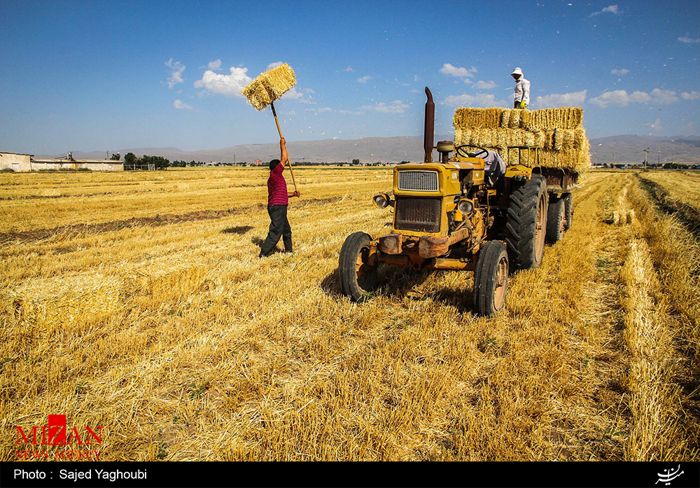Wheat has been a vital crop for centuries, playing a significant role in the development of human civilization. With its origins dating back to ancient times, this staple food has remained a cornerstone in diets around the world. Beyond its culinary significance, wheat also holds economic importance as a key commodity in the global market.
The Origins of Wheat Cultivation
Wheat cultivation has a long history that began in the Fertile Crescent, encompassing present-day Iraq, Syria, and Turkey. This region witnessed a shift from hunter-gatherer societies to settled agricultural communities thousands of years ago.
Humans recognized the adaptability and high yield potential of wheat, making it one of the first domesticated crops. Its cultivation provided a stable food source, allowing people to settle in one place and develop complex social structures.
Over time, advancements in farming techniques improved wheat varieties, contributing to trade networks and economic systems. Wheat’s origins in the Fertile Crescent have had a lasting impact on human civilization.
Wheat as a Staple Food Around the World
Wheat, cultivated on every continent except Antarctica, is a staple food for over 35% of the global population. From bread and pasta to pastries and cereals, wheat-based products are consumed daily across different cultures, making it an essential part of diets worldwide.
Its versatility and nutritional value, rich in carbohydrates, fiber, vitamins, and minerals, contribute to its status as a vital crop that connects people through the shared experience of nourishment.
The Economic Significance of Wheat Production
Wheat’s economic importance extends beyond its role as food. As a widely produced crop, changes in wheat prices can impact economies worldwide. Understanding this market is crucial for investors looking to capitalize on its potential.
Investing in wheat offers unique opportunities for diversifying portfolios and tapping into agricultural markets. To make informed decisions, understanding different wheat types, factors influencing prices and demand, and the cyclical nature of this market is essential.
Exploring the Different Types of Wheat
Wheat cultivation encompasses several varieties, including hard red winter, soft red winter, hard red spring, and durum wheat. Each type possesses distinct characteristics such as protein content, gluten strength, and milling properties. Understanding these differences is crucial for assessing market demand for specific wheat types.
Hard red winter wheat is high in protein and used for bread-making due to its strong gluten properties. Soft red winter wheat has lower protein and gluten content, making it ideal for pastries and cakes. Hard red spring wheat has robust gluten and is often milled into bread flour.
Durum wheat has low gluten content and is primarily used for making pasta.
By comprehending these distinctions, investors can make informed decisions based on consumer demands. Bakers can choose the appropriate wheat variety to achieve desired qualities in their baked goods. Pasta manufacturers can select durum wheat to create firm yet tender noodles.
In conclusion (optional), exploring the different types of wheat reveals a range of options with unique characteristics that cater to diverse culinary needs. By understanding these nuances, investors can meet market demands effectively.
| Wheat Variety | Protein Content | Gluten Strength | Milling Properties |
|---|---|---|---|
| Hard Red Winter | High | Strong | Whole-grain flour |
| Soft Red Winter | Lower | Lower | All-purpose flour |
| Hard Red Spring | High | Strong | Bread flour |
| Durum | Moderate | Low | Semolina flour |
Factors Affecting Wheat Prices and Demand
Several factors influence wheat prices, including supply and demand dynamics, weather conditions, government policies, and global economic trends. Fluctuations in any of these factors can lead to price changes in the wheat market.
Additionally, shifts in consumer preferences towards healthier food choices or dietary restrictions like gluten-free diets can impact the demand for wheat-based products.
Supply and demand dynamics play a significant role in determining wheat prices. When supply exceeds demand, prices decrease, while higher demand with limited supply causes prices to rise. Weather conditions such as droughts or floods can affect crop yields and reduce supply levels, leading to price increases due to scarcity.
Government policies like subsidies or trade regulations also influence wheat prices by affecting production levels and import/export flows. Lastly, global economic trends impact consumer purchasing power and preferences for wheat-based products.
Examining the Cyclical Nature of the Wheat Market
The wheat market operates in cycles due to its seasonal nature and susceptibility to external factors such as weather conditions and disease outbreaks. These cycles have significant implications for investors, who must understand and analyze them when considering investments in this commodity.
Wheat cultivation is highly dependent on seasonality, resulting in regular fluctuations in supply and demand. Weather conditions, like droughts or excessive rainfall, can impact crop yields and quality, leading to price variations.
Disease outbreaks further influence these cycles, with diseases like rust or blight causing reduced supply and increased prices. By analyzing historical data and monitoring market trends, investors can identify patterns that offer insights into future price movements.
Other external factors such as economic conditions, government policies, global trade agreements, and shifts in consumer preferences also contribute to the cyclical nature of the wheat market. Considering these influences is crucial for investors to make informed decisions regarding their entry or exit points.
In summary, understanding the cyclical nature of the wheat market helps investors identify opportunities for profit. However, thorough research and analysis are necessary to mitigate risks associated with its inherent fluctuations.
Potential for Long-Term Returns in the Wheat Market
Investing in wheat offers attractive long-term returns due to its role as a staple crop and the growing global demand for food. With the increasing population, there is a continuous need for wheat-based products like bread, pasta, and cereals. Advancements in technology have improved wheat production efficiency, ensuring higher profits for farmers.
Additionally, wheat’s versatility as an ingredient in animal feed and biofuel manufacturing further supports its consistent demand. International trade presents opportunities for investment in both local and international markets.
Overall, investing in the wheat market provides exposure to a stable industry with potential for long-term profitability.
Diversification Benefits for Investment Portfolios
Including wheat investments in a portfolio offers diversification benefits. Unlike stocks or bonds, agricultural commodities like wheat have low correlation with other asset classes. This helps reduce overall portfolio risk by spreading investments across different industries.
Wheat’s independence from traditional financial markets and its demand drivers make it a stable option during market volatility. Moreover, investing in wheat provides protection against inflation and enhances long-term returns.
Integrating wheat investments into a portfolio brings diversification advantages that can mitigate risk and improve resilience.
[lyte id=’yZvY5fuF8bw’]







